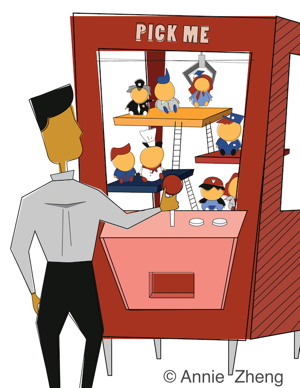Predicting the effects of stereotypes and biases
Earlier this week, PNAS published our paper presenting a computational model that predicts the effects of stereotypes and biases with an accuracy and precision that I would not have thought was possible even 2 years ago. I had some media requests that asked me to elaborate on the study for a more general audience. I figure it is worthwhile to post them here in addition for all to see:
What was the significance of this research? What did we learn?
Our study showed how to quantitatively predict how our stereotypes about other groups affect our treatment of these groups, and addressed two important outstanding questions when it comes to stereotypes and biases.
 First is the question of how to quantify and predict effects of stereotypes, which deal with intangible thoughts and beliefs, on tangible behavior and outcomes, measured for example in dollars and cents.
First is the question of how to quantify and predict effects of stereotypes, which deal with intangible thoughts and beliefs, on tangible behavior and outcomes, measured for example in dollars and cents.
Second is the question of comparing across the advantages and disadvantages conferred by different stereotypes. For example, do stereotypes about one being "female" affect how one is treated more than say "Hispanic"? If so, how much more or less? This is particularly challenging as there are nearly infinite ways that people can stereotype different social groups.
Our results show that it is possible to do both. The basic idea is that stereotypes change the weight we place on the outcome of others. Some stereotypes increase how much we care about someone, some stereotypes decrease it. Moreover, all stereotypes can be organized along two dimensions: warmth and competence. For example, in the US, comparing stereotypes about an Irish person and a Japanese person. The Irish person is thought of as warmer but the Japanese person is thought of as more competent.
How did you arrive at these conclusions?
We developed a computational model that took in people's ratings about others' perceived warmth and competence, as well as the economic incentives that people are faced with. We then tested how people behaved toward members of other groups in laboratory experiments involving over 1,200 participants. Specifically, the degree to which certain groups were perceived as warm or competent conferred specific amount of benefit/penalty.
We then further validated this model could predict behavior in a previously published labor market field experiment involving thirteen thousand resumes. Specifically, using people's perceptions of warmth and competence, we were able to predict the likelihood that someone would be called back when applying for a job.
What was the significance of this research? What did we learn?
Our study showed how to quantitatively predict how our stereotypes about other groups affect our treatment of these groups, and addressed two important outstanding questions when it comes to stereotypes and biases.

Second is the question of comparing across the advantages and disadvantages conferred by different stereotypes. For example, do stereotypes about one being "female" affect how one is treated more than say "Hispanic"? If so, how much more or less? This is particularly challenging as there are nearly infinite ways that people can stereotype different social groups.
Our results show that it is possible to do both. The basic idea is that stereotypes change the weight we place on the outcome of others. Some stereotypes increase how much we care about someone, some stereotypes decrease it. Moreover, all stereotypes can be organized along two dimensions: warmth and competence. For example, in the US, comparing stereotypes about an Irish person and a Japanese person. The Irish person is thought of as warmer but the Japanese person is thought of as more competent.
How did you arrive at these conclusions?
We developed a computational model that took in people's ratings about others' perceived warmth and competence, as well as the economic incentives that people are faced with. We then tested how people behaved toward members of other groups in laboratory experiments involving over 1,200 participants. Specifically, the degree to which certain groups were perceived as warm or competent conferred specific amount of benefit/penalty.
We then further validated this model could predict behavior in a previously published labor market field experiment involving thirteen thousand resumes. Specifically, using people's perceptions of warmth and competence, we were able to predict the likelihood that someone would be called back when applying for a job.